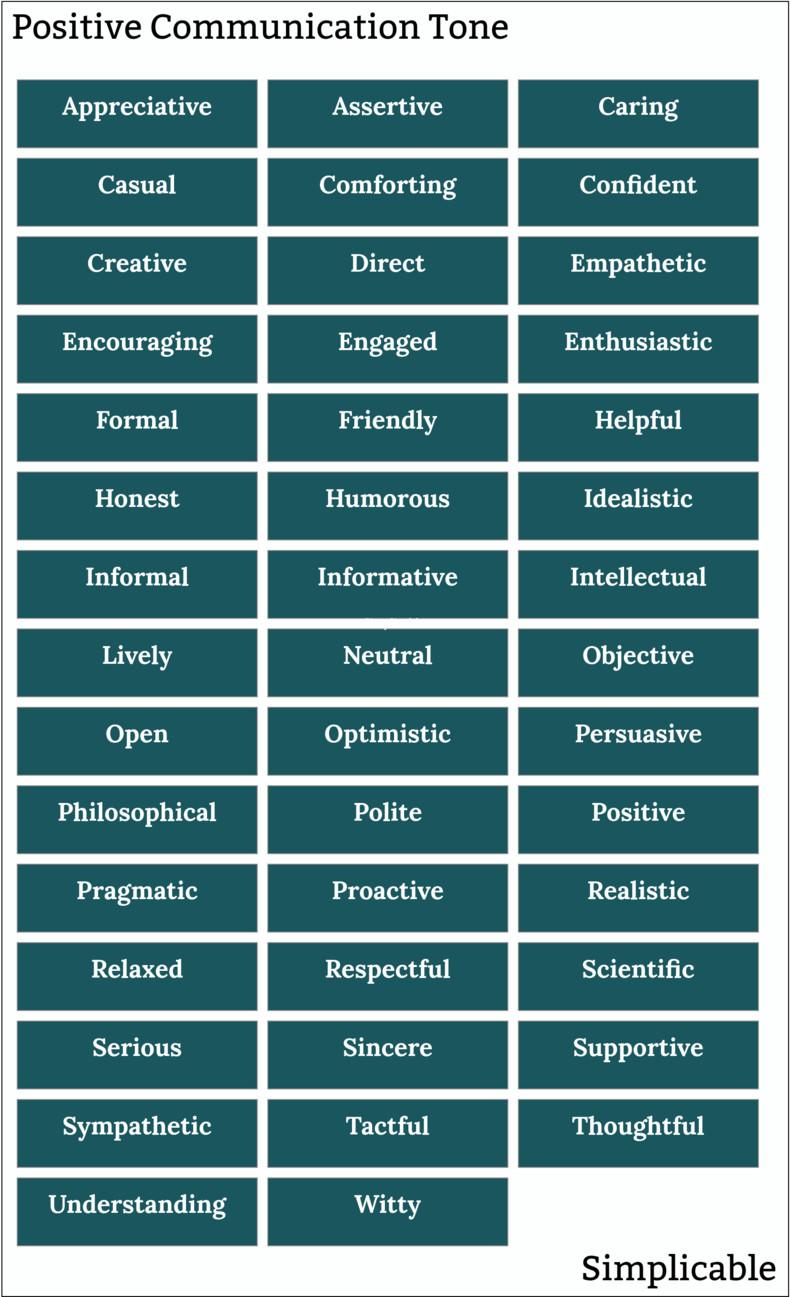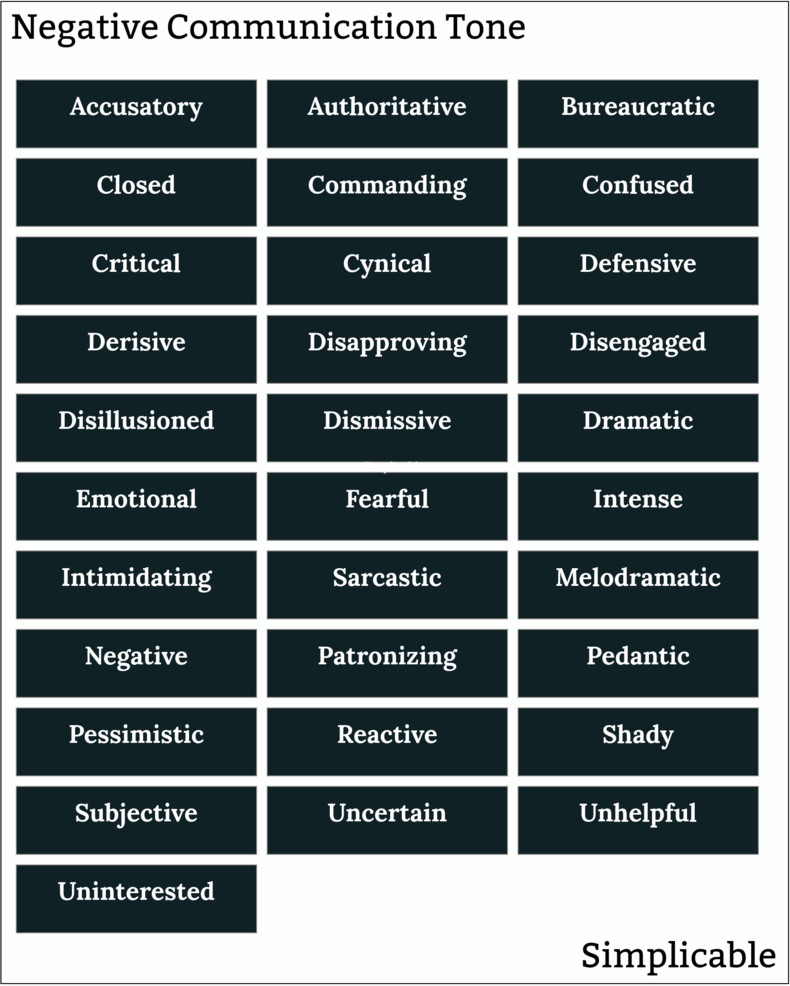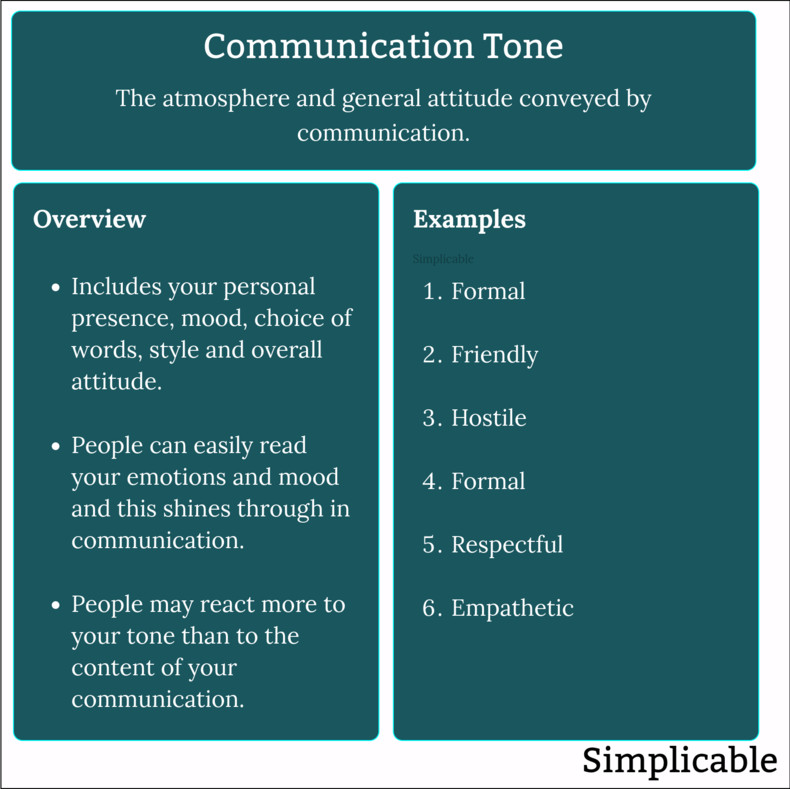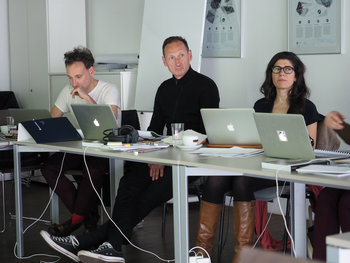
Accusatory | Appreciative |
Assertive | Authoritative |
Bureaucratic | Casual |
Closed | Comforting |
Commanding | Complimentary |
Confident | Confused |
Creative | Critical |
Cynical | Defensive |
Derisive | Direct |
Disapproving | Disengaged |
Disillusioned | Dismissive |
Dramatic | Emotional |
Empathetic / Caring | Encouraging |
Engaged | Enthusiastic |
Fearful | Formal |
Friendly | Helpful |
Honest | Humorous |
Idealistic | Indirect |
Informal | Informative |
Intellectual | Intense |
Intimidating | Ironic |
Light-hearted | Lively |
Melodramatic | Negative |
Neutral | Objective |
Open | Opportunistic |
Optimistic | Patronizing |
Pedantic | Persuasive |
Pessimistic | Philosophical |
Polite | Positive |
Pragmatic | Proactive |
Reactive | Realistic |
Relaxed | Respectful |
Sarcastic | Scientific |
Serious | Shady |
Sincere | Subjective |
Supportive | Sympathetic |
Tactful | Thoughtful |
Uncertain | Understanding |
Unemotional | Unhelpful |
Uninterested | Witty |
Positive Tone
The following tones are usually perceived as positive.
Negative Tone
The following tones are potentially viewed as negative depending on the context.
Summary
People will often react to your tone more than the content of what you say. As such, monitoring your tone and positioning it in some positive way can greatly improve communication results. Reading the tone of communications is also an important skill whereby you can see how someone is feeling or how they want to approach things.































